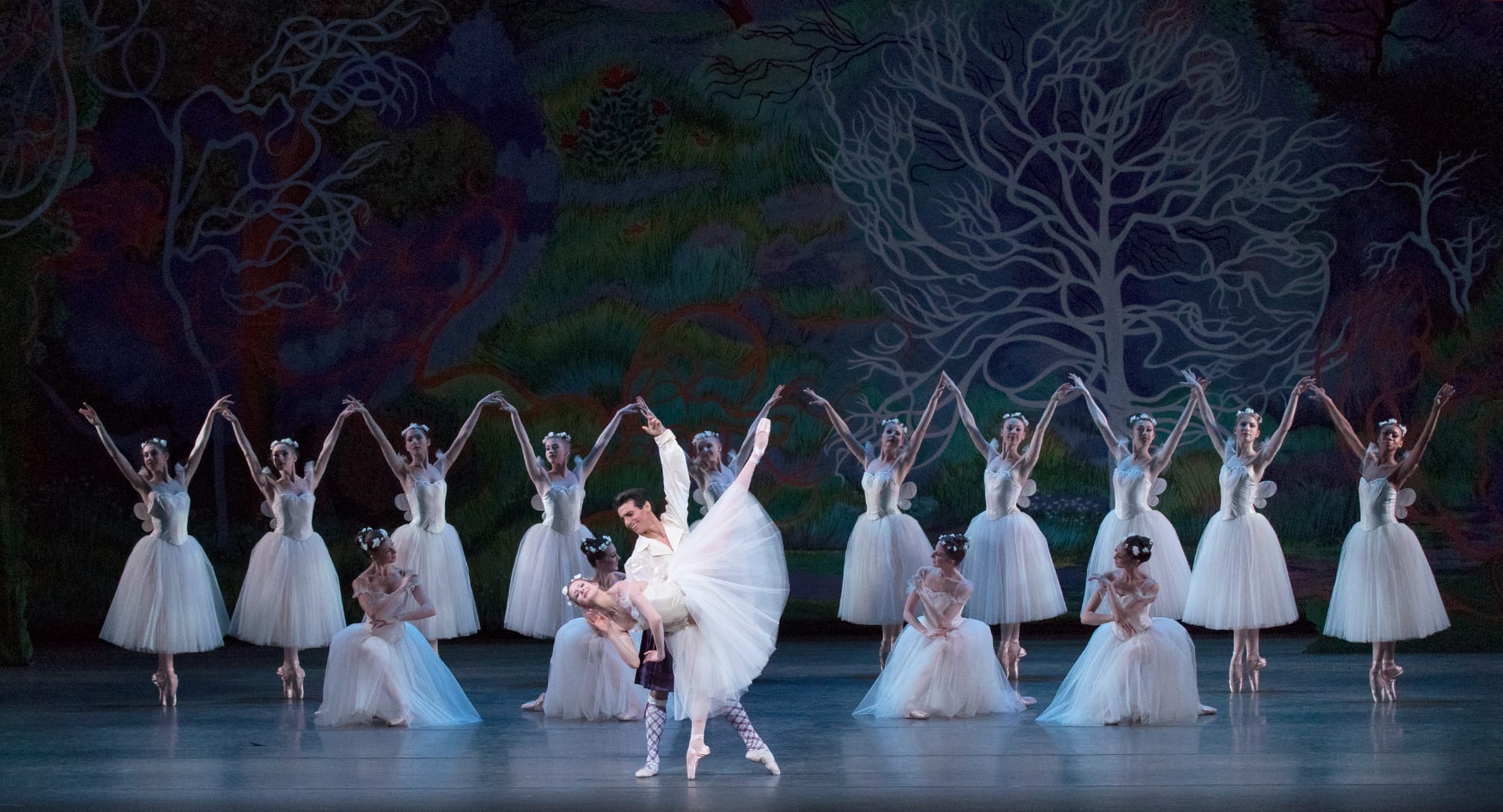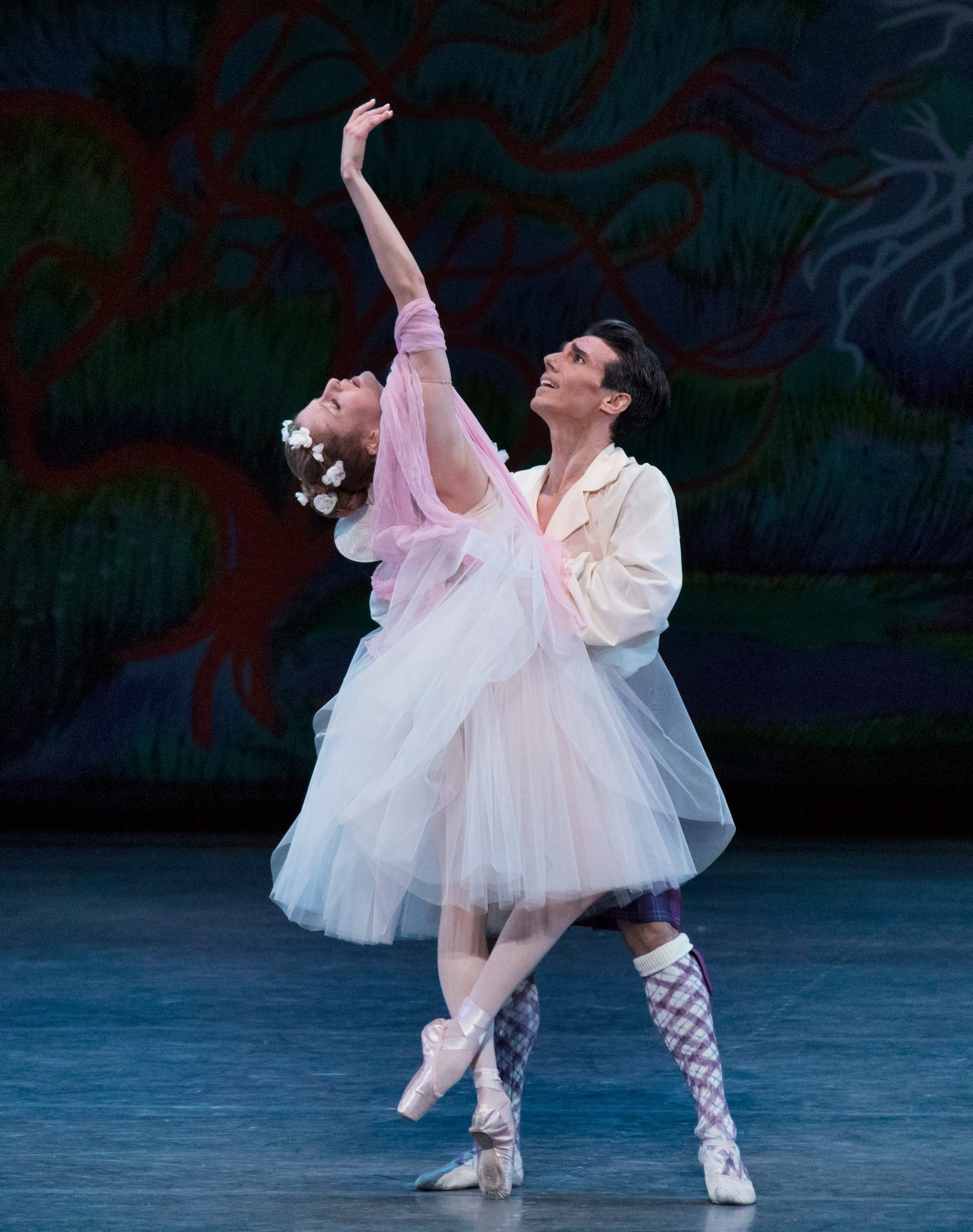Danish Pastries

"Bournonville Divertissements", "La Sylphide"
New York City Ballet
David H. Koch Theater
New York, NY
May 7, 2015
The New York City Ballet gala featured works by the 19th century Danish choreographer, August Bournonville, with a revival of the 1977 potpourri "Bournonville Divertissements" concocted by Stanley Williams, and the first performance of Peter Martins' staging of the full-length "La Sylphide". The pieces included in the divertissements have varied slightly over the years, as the luminously youthful pas de deux from "Kermesse in Bruges" and the fiendishly difficult "La Ventana" pas de trios vanished too soon, replaced by the pas de six from "Napoli". The current version has, inexplicably, dropped the witty "Jockey Dance", for two men (why, when it would give two younger dancers a chance to shine) so most of what remains comes from "Napoli", that eternally joyful salute to Italy.
The Bournonville style, with its light skimming jumps, modest low arms (which means the legs must work extra hard), and the specific épaulement with the head always turning towards the working leg is difficult enough, but the dancers must look happy and open-hearted. This style is a far cry from Balanchine's cool elegance, but these excerpts proved that Bournonville is worth the effort. Erica Pereira was a bit brittle and self-conscious leading the opening Ballabile--her smile seemed frozen solid and directed straight towards the audience--but her partner Allen Peiffer danced with an irresistibly modest confidence, embracing the audience with his open arms.

Tyler Angle in the pas de deux from the "Flower Festival of Genzano" also looked at home in the light, fleet steps, and he got to wear the traditional Bournonville black and white shoes, which emphasize the footwork. He danced with a breezy flair, turning his head so easily and spinning from position to position like a natural. Sara Mearns, his partner, is certainly not a natural Bournonville dancer. Her flamboyance seemed to overwhelm the lovely poem about two young lovers and her high, exuberant kicks seemed at times to be directed straight at the choreography. It was as if she telling an obscure Hans Christian Andersen tale of a firecracker who really wanted to be a tea cup. But she didn't try to force herself to play against type, avoiding any hint of coyness and her vigor, while certainly far from Denmark, was certainly arresting.
The women in the pas de six (Lauren King, Megan LeCrone, Rebecca Krohn and Lauren Lovette) looked as if they could have used some more rehearsal as some of the spacing seemed a bit wayward, but their solos were stylish; Lovette and King were especially scrupulous. The men (Adrian Danchig-Waring and Amar Ramasar) were spirited but couldn't quite capture the effortless flow and occasionally looked a bit winded. They were joined by Anthony Huxley, who had a fast solo with several jumps into deep plié. I have seen Danes go deeper and spring higher, but his dancing was absolutely thrilling.
The final tarantella, complete with tambourines, started with a flourish, led by Ramasar and Ashly Isaacs (though she was not listed in the program, her dancing was pure sunshine.) Mearns and Angle showed up for the party and she looked completely at home in the throbbing crowd.
In the complete "Napoli" the pas de six and tarantella show the townsfolk celebrating the wedding of Teresina and Gennaro, who are united after several trials. Without this backstory, the dancers just seem to jump around in beautiful formations. For all the technical charms, Bournonville's choreography is so much richer than these excerpts, and "Bournonville Divertissements" shows shapes without a heart, beautiful and charming though those shapes are.
"La Sylphide" has both magnificent choreography and a simple yet profound story--a complete package. Peter Martins' staging is traditional; he writes in the program that the only change he made from the "La Sylphide" he grew up with was to eliminate the intermission. It is a straightforward retelling of the old Romantic dilemma (man is torn between respectability and complete freedom without responsibility, and thinks he has a choice but is manipulated by natural uncontrollable forces to destroy his dream.) Martins, fortunately, trusts the audience to understand the richness of the ballet and does not impose any gratuitous concepts on this wonderful work, letting the audience work out the sub-texts on its own.

The sets and costumes, by Susan Tammany, are based on the ones she designed for Martins' 1985 version for the Pennsylvania Ballet. The first scene is a bit sparse, though it has the proper window and fireplace. The costumes are a swirl of plaid but Tammany does have a penchant for purple and James is forced to wear a lilac velvet jacket. The may, of course, hint of the heather in the forest, where James can find his heart's desire. If so, it is the only natural element there, as the poor sylphs are condemned to flit around a backdrop that looks as if a group of children were given some crayons and told do draw a tree for a Hallmark card.

The opening night Sylphide, Sterling Hyltin, would have triumphed, though, had she danced in front of burlap. The opening scene, where she watches the sleeping James, encapsulated her strengths--light, flowing arms, a direct and captivating simplicity and an otherworldly, pearl-like glow. She had a genuine sweetness (how carefully she scooped up the water for James in the forest). But she remained childlike, playing at real love, since she could not let James touch her. (According to the story, she, like so many other magical creatures, could never be owned and would die if she were held--plenty of sub-texts there.) Her death scene, as the poison scarf destroyed her wings and her sight faded, had a devastating and poignant simplicity, and her wonderfully old-fashioned ascent into the wings seemed to carry all of James' dream away.

Joaquin de Luz was her James. He is an imaginative, subtle and intelligent dancer, and his mime was brilliantly clear, especially in his brief soliloquy explaining his love for Effie and his desire for the sylph. Martins follows the more modern tradition of giving James a sparkling solo in the first act (Bournonville's original moody and conflicted James didn't have the heart to bounce around). De Luz managed to make it dramatically compelling as he seemed to have decided to stay with Effie and was dancing his determination. Of course, the sylph had other plans, and his solos in the forest were full of high-flying, easy beats. But ballet is a visual (and unfair) art, and he just doesn't look like a Romantic hero.
The smaller roles were not as well-defined. Madge (Georgina Pazcoguin) was not helped by a costume that looked like it was salvaged from a road-show production of "Hair", and despite her enthusiastic miming she came across as rather lightweight and veered into camp. Daniel Ulbricbht was the faithful Gurn, who gets the girl in the end. Despite his fine dancing, he came across as Ralph Bellamy, without the moral complexity I have seen in some Gurns. (After all, he lies and knows he lies to get Effie, a shocking and dishonorable action in the 19th century.) The performances may become richer and more nuanced as it is performed. And Hyltin's luminous, magical sylph illuminated the ballet.
copyright © 2015 by Mary Cargill



